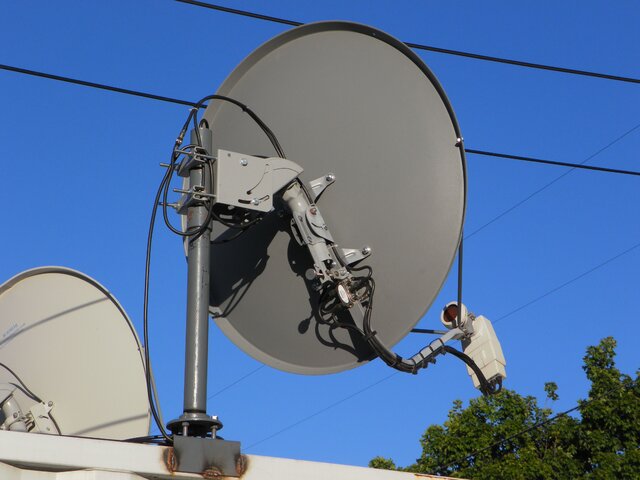Any info on wiring? I know I need RG-6 coax < 100 ft or RG-6 Quad Shield > 100ft. I assume I need a power cord for the motor. Can I also splice into my cable box to feed the signal? Or do I need to open a new hole in the wall with a new box?
ColoSAT101,
Unless you are setting up a C-Band BUD, you do not need any additional cables or wires beyond the RG-6 cable. Ku band H-H motors don't require any additional cabling. The FTA receiver will supply the necessary voltage and current levels and the RG-6 RF cable will carry these motor and switch power signals on the same RG-6 cable that your IF signal is coming in from the LNBF on.
The only additional cables you might want would be used for feeding additional receivers direct from the LNBF or an external switch. You would have one master receiver controlling the motor, the other receivers could connect to a switch or to an alternate output from the LNBF if you get an LNBF model that sports multiple feed outlet ports.
Get high quality RG-6 cable. Don't skimp. If you can get solid copper center conductor, that's better. Don't worry about quad shield RG-6 unless you are routing the cable near a lot of AC power conductors (or if you happen to get a really sweet deal on a bulk roll of it). If you are going for long runs, the quad shield cable isn't going to make much difference here. It is more to suppress or cancel noise from other RF and electrical sources and prevent that from bleeding into the cable and the IF satellite signal. For long runs, accelerate to RG-11 cable.
In either case, always use compression connectors as opposed to the crimp on style. Purchase a crimper and cable stripping tool and make sure that they are the high quality tools. Don't get a cheap $3.95 or even a $7.98 tool. They'll break, dull or won't get a proper job done right from the start.
You cannot tap into the cable box in any way (if by that you meant the cable controller box) however, you may be able to utilize the wiring if it is no longer being used to carry the cable signals. If that wiring is good quality RG-6, it would be fine to reuse it and that will save some internal installation time and hassle. Make sure you check the cable type before using it. RG-59 is not acceptable, even for a short distance. Although it might be acceptable for a very short and temporary jumper (a couple feet long), I personally wouldn't use it for any purpose at all. The type should be printed on the insulating jacket along the length of the cable.
RADAR



